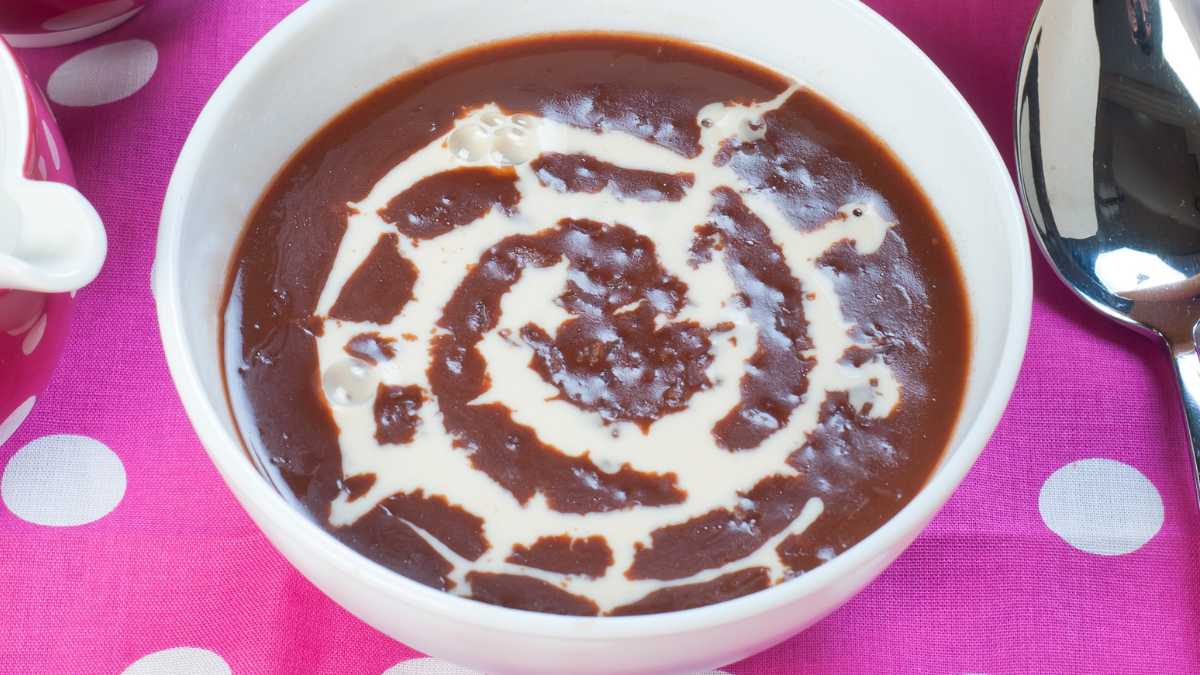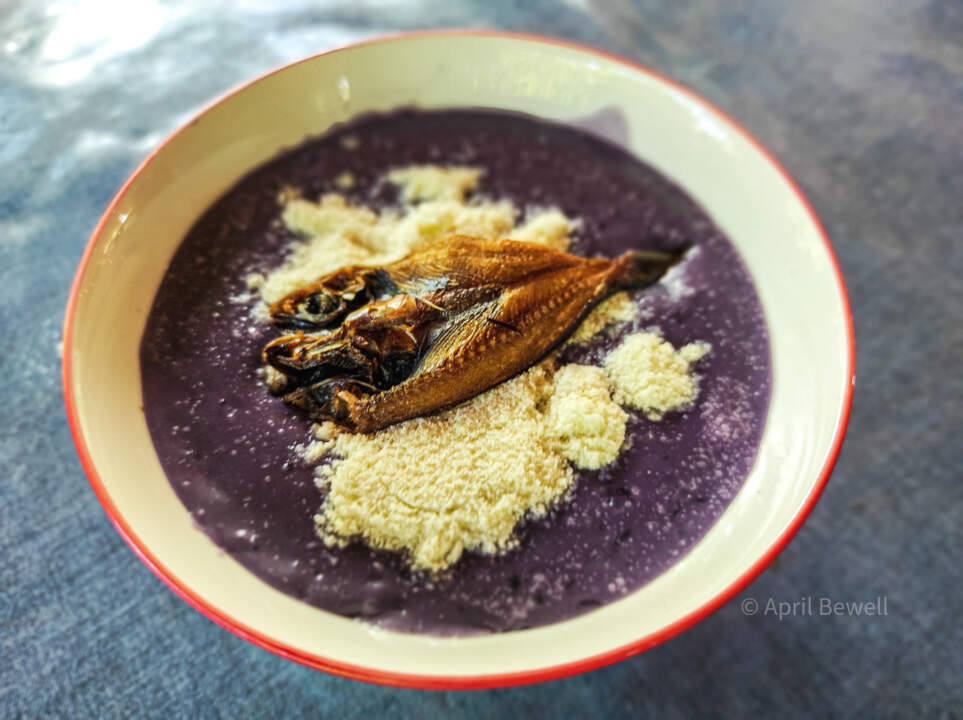Champorado Recipe: A Comforting Filipino Chocolate Rice Porridge (Plus Fun Variations!)

Craving a warm and comforting treat that’s bursting with chocolate flavor? Look no further than champorado, a beloved Filipino rice porridge!
Hey there, mamas! Today, we’re taking a trip down memory lane (or maybe introducing you to a new favorite!) with a delicious Filipino classic: champorado ercipe -a chocolate rice porridge.
This isn’t your average oatmeal, oh no. Champorado is a warm, chocolatey rice porridge that’s been a staple in Filipino households for ages. It’s the kind of food that brings back cozy mornings spent snuggled up with the fam, and it’s perfect for satisfying any sweet tooth. I remember waking up to mornings that smells like chocolate -we have a cacao tree and my grandma used to make tablea (a sort of chocolate block but 100% cocoa) so it’s a regular thing at our old house.
But what exactly is champorado? At the very basic, it’s all about two main ingredients: sweet, sticky rice (called malagkit) and cocoa powder. The rice gives champorado that wonderful chewy texture, while the cocoa powder infuses it with rich, chocolatey goodness.
The origins of the champorado recipe can be traced back to the Spanish colonial era, when the dish was likely influenced by the Spanish chocolate-based porridges. We used to have the basic lugaw or the arroz caldo representing our porridge pantheon . Over time, it has become a beloved part of Filipino culinary culture, with families passing down their cherished recipes from generation to generation.
Making Champorado Recipe is a Breeze: This is definitely as easy cook, mamas! We simply cook the malagkit in water until it’s nice and creamy, then whisk in some cocoa powder and sugar to create that signature chocolate flavor. Round off the experience with powdered milk, condensed milk, or evaporated milk for an extra creamy, indulgent touch! You can even easily use the porridge button on your rice cooker for a no-touch recipe!
The beauty of champorado is its versatility. It’s perfect for:
- Breakfast: Kickstart your day with a warm, comforting bowl of champorado. It’s filling enough to keep you going until lunchtime, and the chocolate gives you a little energy boost.
- Snack time: Need a pick-me-up between meals? Champorado is the perfect solution! It’s satisfying without being too heavy, and the chocolate always hits the spot.
- Dessert: Who says dessert can’t be comforting? A warm (or cold!) bowl of champorado is a delicious way to end the day, especially with a scoop of vanilla ice cream on top!
Beyond chocolate. Guess what? Champorado isn’t a one-trick pony. Recently, theres been a trend of other variations that foodies are beginning to enjoy. Here are some fun variations to try:

Ube Champorado
- Ube Champorado: Love purple yam? Swap some of the cocoa powder for ube halaya (purple yam jam) or ube flavored na condensed milk for a vibrant and delicious twist.
- Ube-Chocolate Swirl: Can’t decide between chocolate and ube? Have both! Layer chocolate champorado with ube champorado for a beautiful and tasty treat.
- Tablea Champorado: Feeling adventurous? Use tablea, traditional Filipino cocoa tablets, instead of cocoa powder for an even more authentic experience.
How to Make Champorado Recipe -Chocolate Rice Porridge
Making Champorado is so easy that there’s really no recipe for it. But here are the basics in case you’re new to this.
Ingredients and Preparation
Sweet Glutinous Rice (Malagkit)
At the heart of champorado is the glutinous rice, known locally as malagkit. This sticky rice variety lends a unique texture to the porridge, providing a chewy base for the rich chocolate flavor. For normal days when I don’t have gl;utinous rice, I just use leftover rice!
Cocoa Powder
The key to champorado’s decadent flavor is cocoa powder. This ingredient infuses the porridge with a deep, chocolatey taste, creating a satisfyingly sweet and slightly bitter balance. I usually use baking cocoa for that slightly bitter taste that I’m used to. Be careful with using the cheap cocoa powder that has a weird aftertaste that tastes like flour. You can also use the Filipino Traditional tablea.
Sugar and Evaporated Milk
To sweeten the porridge, sugar is added to taste, enhancing the richness of the cocoa. Some recipes also incorporate evaporated milk for added creaminess, elevating champorado to new levels of indulgence.
Cooking Process
To prepare champorado, the sweet glutinous rice is first washed and cooked until tender. The default combination is 1:10. That is 1 cup of malagkit or rice to 10 cups of water. Make it a rolling boil to fully cook the rice but do stir it occasionally to prevent rice sticking to the pot. Then, cocoa powder and sugar are added to the pot, stirring until the mixture thickens into a smooth, velvety consistency. Make sure to dilute cocoa in hot water first so it’s not hard to mix.
Serving and Presentation
Traditional Accompaniments of Champorado
Champorado is typically served hot, straight from the pot, in individual bowls or mugs. It’s also perfect for the unique Filipino tradition of pairing sweet and salty for a savory contrast-usually our Tuyo (salted dried fish) or dilis (died anchovies) (is best but go ahead and try some other salty sides such as bacon, sausage, or even Spam! Some also enjoy it with a drizzle of coconut milk, adding a tropical twist to this comforting dish.
No matter how you enjoy it, champorado is a true taste of Filipino tradition. For many Filipinos, champorado is a symbol of comfort and nostalgia. It evokes memories of childhood breakfasts, rainy days spent indoors, and gatherings with loved ones. Its warm, indulgent flavors provide a sense of familiarity and solace So next time you’re looking for a cozy treat, whip up a pot of champorado and create some new memories of your own!
